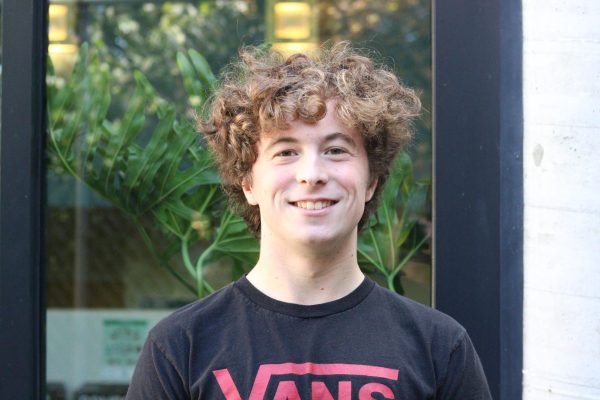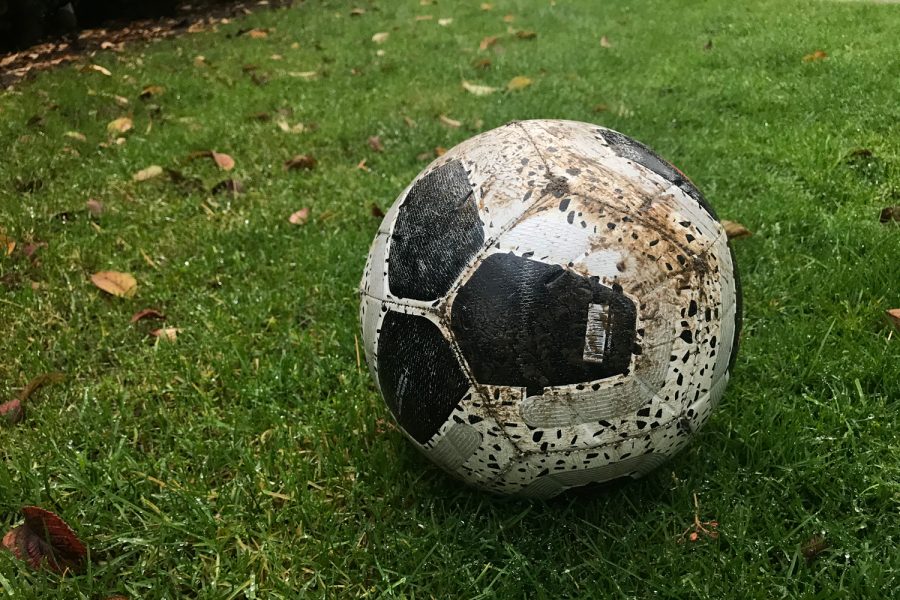Slipping and Sliding
Many athletes are not happy with the conditions on Dahl field and want to find a possible solution
Photo: Carter Headstrom
Playing soccer on Dahl Field can get very muddy.
The usual Seattle weather comes down hard, soaking the marshy field below. A ball bounces awkwardly along the surface, the tall grass and thick mud slowing it down until it comes to a complete stop. This scene becomes a regular occurrence on Dahl Field throughout the year and it’s frustrating some of the people who play there frequently.
Eighth grader Kaiden Lo-Birdsall normally plays on Dahl three or four days a week. He finds it difficult to play sports on the field, especially soccer.
“For ultimate it’s a little easier to play just because you don’t have to kick something on the ground, but for soccer, there’s a lot of holes in the ground so when the ball moves it bounces around and it’s a little hard to play,” Lo-Birdsall said.
Lo-Birdsall also thinks that mud plays a huge role in the quality of the field.
“When you are trying to run, your feet sink into the mud and you can barely run. Or you just get covered in mud, and the ball can barely move anywhere,” Lo-Birsall said.
Lo-Birdsall came up with a solution as well.
“Turf would definitely work,” Lo-Birdsall said.
However, UPrep Director of Athletics Rebecca Moe has a few reasons why this may not be able to happen. One of them regarding the new building that the school is trying to plan and build across the street.
“UPrep had to do a lot of work for that building across the street so a lot of the work that has been done for facility enhancement has been for getting the permit for that property and ultimately building it,” Moe said.
Another one of the reasons according to Moe was that Dahl is really far back on the list to get turfed.
“There was some momentum probably six years ago, but only to find out that Dahl is on the list but it’s like 300th on the list. The parks department in the city were making sure that there were turf fields in other quadrants of the city because the Northeast had a lot of turf fields already,” Moe said.
Even if Dahl gets turfed there is no guarantee that UPrep will even be able to use it.
“If Dahl field gets turfed and then a public school wants it, they would get the priority because of their (Seattle Parks Department) joint use agreement with the public schools,” Moe said.
Moe agreed that Dahl may not be the most ideal field but stated that it’s not the school’s priority at the moment.
“A couple of years ago, I was out there and I saw ducks floating in the right field of the baseball field,” Moe said. “The school is going to prioritize what they need and right now that is not funding the turf field.”
Karen O’Connor has worked at Seattle Parks for twelve years and adds some more reasons why turfing Dahl field would be difficult.
“SPR determines which fields to convert to synthetic turf, including field use, location, gaps in service areas for other turf fields, and the long term costs of maintaining the synthetic turf fields,” O’Connor said in an email to Puma Prints.
She also thinks that if the city were to turf Dahl field it would have significant drainage problems.
“It’s worth noting that the subsurface issues that cause settling in parts of the current field would likely also present a long-term challenge to drainage for a synthetic turf field,” O’Connor said.
With all that in mind, O’Connor thinks that even after it is funded, it will still take a very long time to design and build the turf field.
“Once a project is funded, there will be planning, design, and permitting which takes about a year, and then approximately 9-12 months for construction,” O’Connor said.
Your donation will support the student journalists of UPrep.

Carter Headstrom is an editor-in-chief on the staff of the Puma Press. He is a senior and this is his fourth year on staff. He loves to write sports stories...

